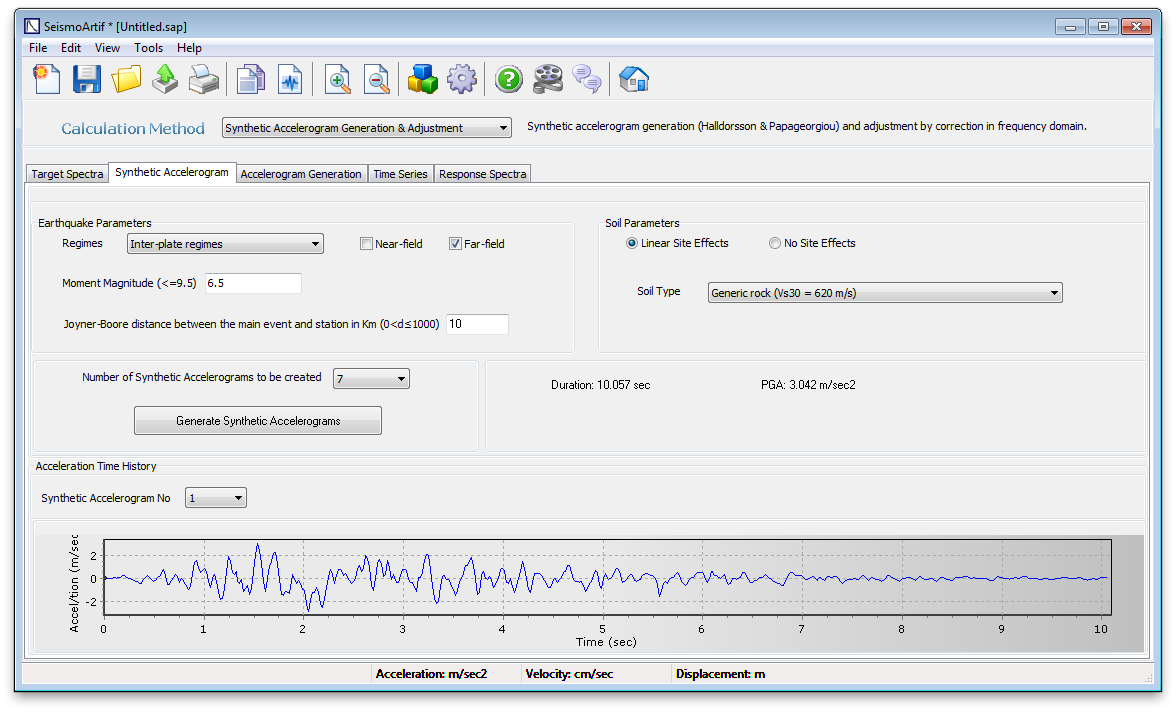Synthetic Accelerogram
The procedure for creating synthetic ground motions is based on the work of Halldorsson and Papageorgiou [2005], and requires the definition of the parameters described below.
Earthquake parameters
Regimes
Users can specify the regimes selecting one of the following options:
- Inter-plate regimes
- Regimes of active tectonic extension
- Intra-plate regimes
In addition, the user can select the far-field or the near-field option (near-field effects refer to the presence of long-period velocity/displacement pulses in the time-histories generated by some <100 km distanced events).
Distance
In case of far-field ground motions, the Joyner-Boore distance (shortest distance from a site to the surface projection of the fault) should be specified in a range of between 0 and 1000 km. The only exception is in the case of intra-plate regimes, where a user should instead define the hypocentral distance (shortest distance from a site to the fault) within a range of between 7 and 1000 km. The default value is 10 km for both aforementioned cases.
In case of near-field ground motions, the hypocentral distance between the sub-event and the station should be set within a range of between 1 and 35 km. The default value is 10 km.
Magnitude
Moment magnitude (Mw) is required for the definition of the synthetic accelerogram. The upper limit for this value is set as equal to 9.5.
Soil parameters
Soil effects can be considered or not, selecting one of the two options available (i.e. Linear Site Effects or No Site Effects). If the Linear Site Effects option is selected, the user can choose one of the options relative to the soil type from the drop-down menu. Eight soil types (as a function of the wave shear velocity Vs30) are currently available in SeismoArtif and are listed below:
- Stiff rock (Vs30 = 940 m/s)
- Generic rock (Vs30 = 620 m/s)
- Generic Soil (Vs30 = 310 m/s)
- ENA generic very hard rock (Vs30 = 2900 m/s)
- ENA NERPH B-C boundary (Vs30 = 760 m/s)
- NERPH B-C boundary (Vs30 = 700 m/s)
- NERPH class C (Vs30 = 520 m/s)
- NERPH class D (Vs30 = 255 m/s)
User can then select the number of synthetic accelerograms to be created (up to 8, default is 7). Clicking on the button Generate Synthetic Accelerograms, the synthetic accelerograms are derived and the first one is automatically plotted (users may visualise the others by selecting the corresponding accelerogram from the drop-down menu). The duration and PGA of the created accelerograms are computed as a function of the input parameters (see figure below).
